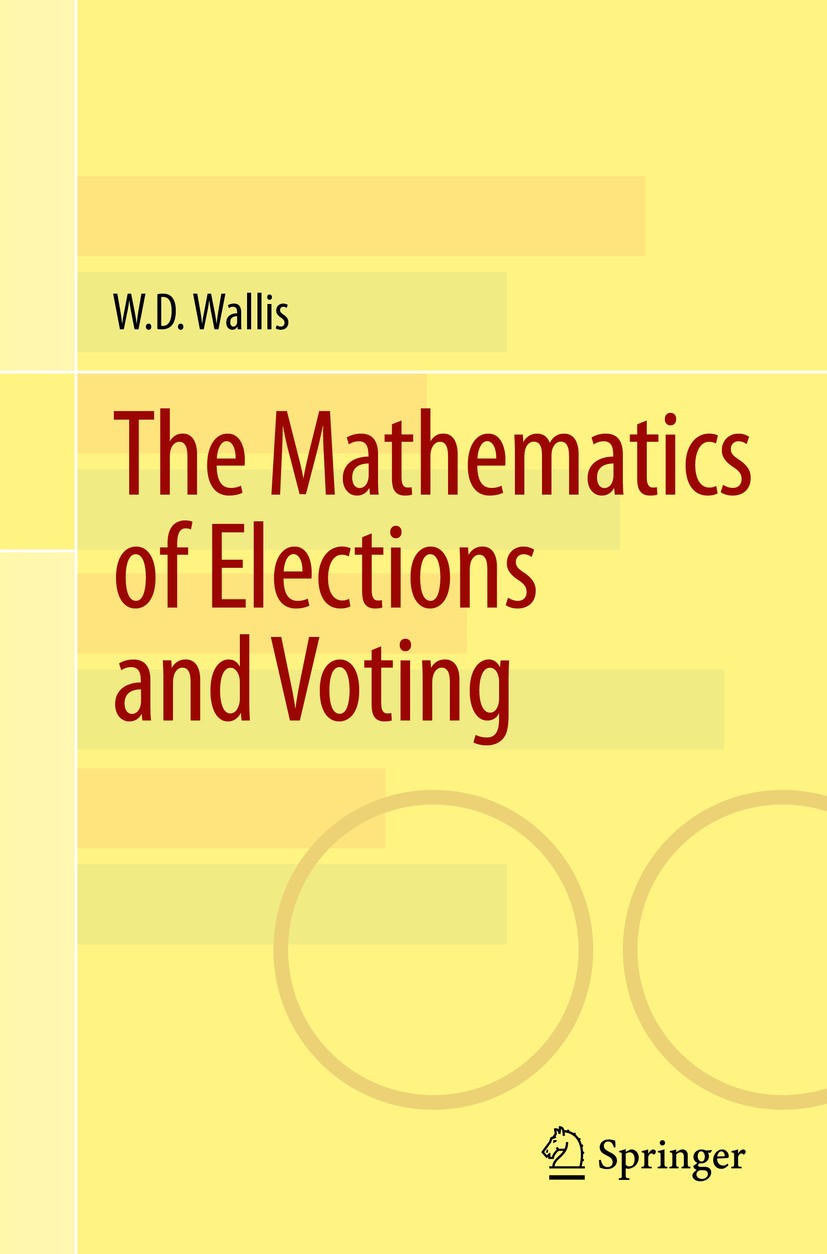| 书目名称 | The Mathematics of Elections and Voting | | 编辑 | W.D. Wallis | | 视频video | http://file.papertrans.cn/914/913758/913758.mp4 | | 概述 | Contains exercises and could be used as a text for a special topics course.Discuss majority and plurality voting, runoff elections and the Hare method.Looks at elections where points are allocated to | | 图书封面 |  | | 描述 | This title takes an in-depth look at the mathematics in the context of voting and electoral systems, with focus on simple ballots, complex elections, fairness, approval voting, ties, fair and unfair voting, and manipulation techniques. The exposition opens with a sketch of the mathematics behind the various methods used in conducting elections. The reader is lead to a comprehensive picture of the theoretical background of mathematics and elections through an analysis of Condorcet’s Principle and Arrow’s Theorem. .of. .conditions in electoral fairness. Further detailed discussion of various related topics include: methods of manipulating the outcome of an election, amendments, and voting on small committees..In recent years, electoral theory has been introduced into lower-level mathematics courses, as a way to illustrate the role of mathematics in our everyday life. Few books have studied voting and elections from amore formal mathematical viewpoint. This text will be useful to those who teach lower level courses or special topics courses and aims to inspire students to understand the more advanced mathematics of the topic. The exercises in this text are ideal for upper undergraduat | | 出版日期 | Textbook 2014 | | 关键词 | Arrow’s Theorem; Condorcet’s principle; Elections; majority rule; plurality voting; voting fairness | | 版次 | 1 | | doi | https://doi.org/10.1007/978-3-319-09810-4 | | isbn_softcover | 978-3-319-09809-8 | | isbn_ebook | 978-3-319-09810-4 | | copyright | Springer International Publishing Switzerland 2014 |
The information of publication is updating

|
|
 |Archiver|手机版|小黑屋|
派博传思国际
( 京公网安备110108008328)
GMT+8, 2025-11-13 23:15
|Archiver|手机版|小黑屋|
派博传思国际
( 京公网安备110108008328)
GMT+8, 2025-11-13 23:15


